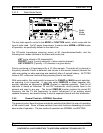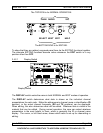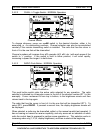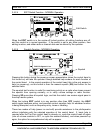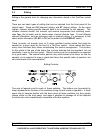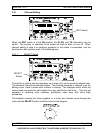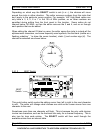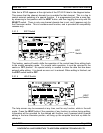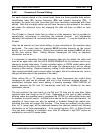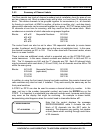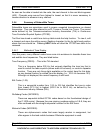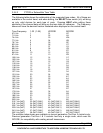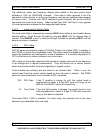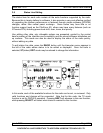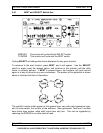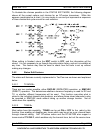
Tac/Com Control Head Manual SM06 Rev. 4.10
3.5.2 Summary of Channel Editing
For each channel stored in the control head, there are three possible data entries;
identification label (ID), receive frequency (RX) and transmit frequency (TX). If
equipped, the radio may also have tone and scan information associated with these
entries. Note that non-agile radios can still have frequency data entered in the master
edit mode (for reference only), but changing this data will have no effect on radio
operation.
The ID label or channel name has no effect on radio operation, and is provided for
operator/pilot convenience in identifying the selected channel. Any alphabetical
character, the numbers 0-9, and some punctuation (space # . - / ) may be inserted in the
ID label.
Help can be used at any time when editing, to give instruction for the operation being
performed. The exact data that pressing HELP provides depends on the current
activity, as it is context-sensitive. Editing tone locations and pressing HELP will bring
up the tone look-up table. Editing channel frequencies will bring up frequency
information, and so on.
It is important to remember that while frequency data may be edited, the radio itself
must be an agile radio, with the AGILE MODE ENABLED on the interface card for any
change to actually take place. Crystal controlled radios, or PROM coded radios which
allow editing of this data in the master edit mode (for reference only), will not change
frequency after editing. Receive frequency editing is also allowed for guard channels
(also crystal controlled) used in some radios, but again, this is for reference only, and no
change will take place in the operation of the radio.
When editing RX or TX frequency data, only those frequencies the control head
recognizes as valid can be entered, and only in the fractional multiples allowed. If
mismatched multiples occur when editing, a warning message, FREQ ERROR will
appear, because the RX and TX frequencies must both be divisible by the same
synthesizer interval.
The last positions (far right hand) on the RX and TX lines are for tone data (these
locations have scan flags on the ID line). Depending on the type of radio installed,
differing codes are possible here to represent the CTCSS (or sub-audible) tones used
for repeater or squelch control. A different tone can be set for receive and transmit. the
capability to have tones can also be enabled or disabled through the status lines,
providing the radio will support this function. If the tones are enabled (via the status
line), an '=' (equal sign) will be displayed between the channel number and following
information on all three presentations. If the special function, DPL, or Digital Private
Line has been enabled at installation time, then 83 different 3 digit DPL codes are
available for use with NT-series radios.
Page 3-14 Jan 4, 2006
ENG-FORM: 806-0106.DOT
CONFIDENTIAL AND PROPRIETARY TO NORTHERN AIRBORNE TECHNOLOGY LTD.



